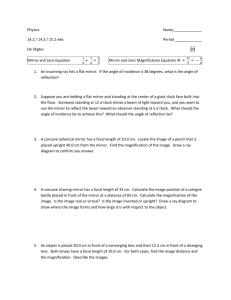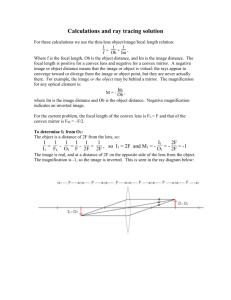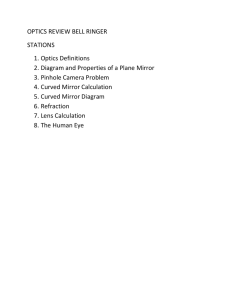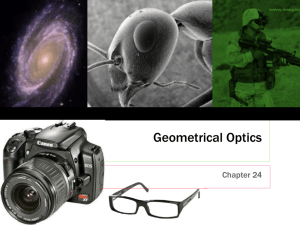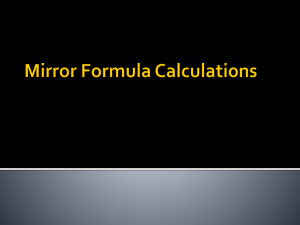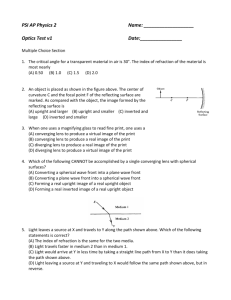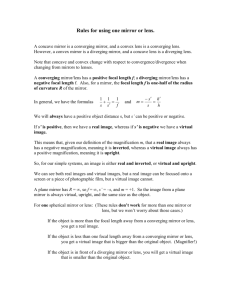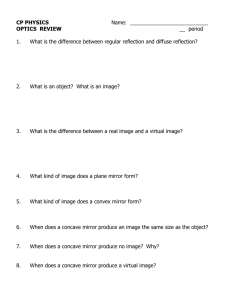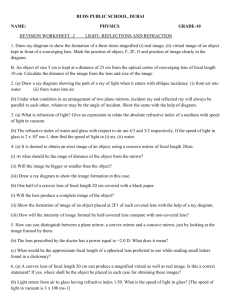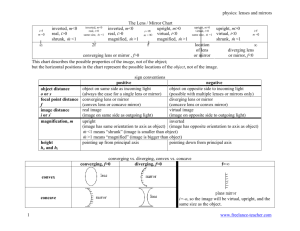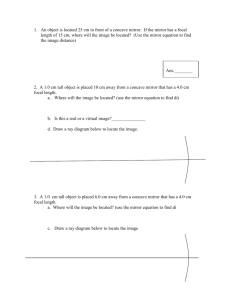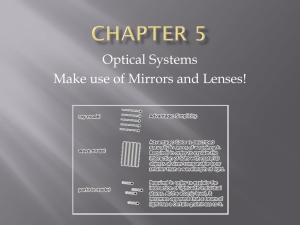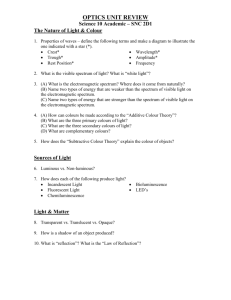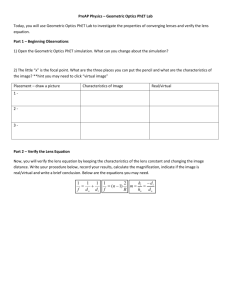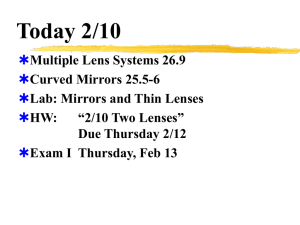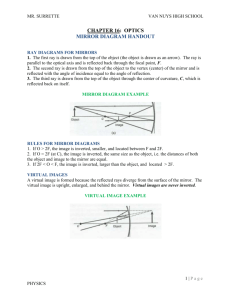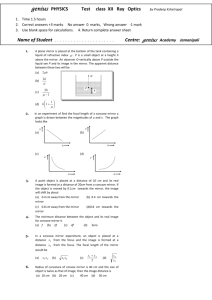Honors Physics * Review problems for Wave Optics, Ray Optics, and
advertisement
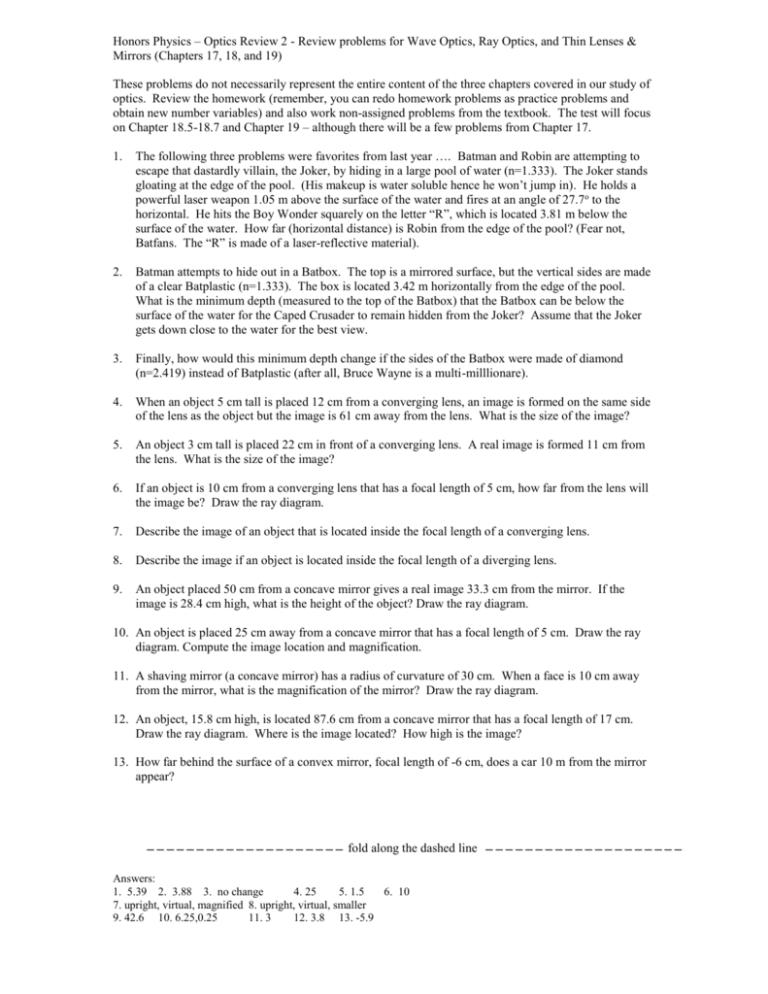
Honors Physics – Optics Review 2 - Review problems for Wave Optics, Ray Optics, and Thin Lenses & Mirrors (Chapters 17, 18, and 19) These problems do not necessarily represent the entire content of the three chapters covered in our study of optics. Review the homework (remember, you can redo homework problems as practice problems and obtain new number variables) and also work non-assigned problems from the textbook. The test will focus on Chapter 18.5-18.7 and Chapter 19 – although there will be a few problems from Chapter 17. 1. The following three problems were favorites from last year …. Batman and Robin are attempting to escape that dastardly villain, the Joker, by hiding in a large pool of water (n=1.333). The Joker stands gloating at the edge of the pool. (His makeup is water soluble hence he won’t jump in). He holds a powerful laser weapon 1.05 m above the surface of the water and fires at an angle of 27.7o to the horizontal. He hits the Boy Wonder squarely on the letter “R”, which is located 3.81 m below the surface of the water. How far (horizontal distance) is Robin from the edge of the pool? (Fear not, Batfans. The “R” is made of a laser-reflective material). 2. Batman attempts to hide out in a Batbox. The top is a mirrored surface, but the vertical sides are made of a clear Batplastic (n=1.333). The box is located 3.42 m horizontally from the edge of the pool. What is the minimum depth (measured to the top of the Batbox) that the Batbox can be below the surface of the water for the Caped Crusader to remain hidden from the Joker? Assume that the Joker gets down close to the water for the best view. 3. Finally, how would this minimum depth change if the sides of the Batbox were made of diamond (n=2.419) instead of Batplastic (after all, Bruce Wayne is a multi-milllionare). 4. When an object 5 cm tall is placed 12 cm from a converging lens, an image is formed on the same side of the lens as the object but the image is 61 cm away from the lens. What is the size of the image? 5. An object 3 cm tall is placed 22 cm in front of a converging lens. A real image is formed 11 cm from the lens. What is the size of the image? 6. If an object is 10 cm from a converging lens that has a focal length of 5 cm, how far from the lens will the image be? Draw the ray diagram. 7. Describe the image of an object that is located inside the focal length of a converging lens. 8. Describe the image if an object is located inside the focal length of a diverging lens. 9. An object placed 50 cm from a concave mirror gives a real image 33.3 cm from the mirror. If the image is 28.4 cm high, what is the height of the object? Draw the ray diagram. 10. An object is placed 25 cm away from a concave mirror that has a focal length of 5 cm. Draw the ray diagram. Compute the image location and magnification. 11. A shaving mirror (a concave mirror) has a radius of curvature of 30 cm. When a face is 10 cm away from the mirror, what is the magnification of the mirror? Draw the ray diagram. 12. An object, 15.8 cm high, is located 87.6 cm from a concave mirror that has a focal length of 17 cm. Draw the ray diagram. Where is the image located? How high is the image? 13. How far behind the surface of a convex mirror, focal length of -6 cm, does a car 10 m from the mirror appear? fold along the dashed line Answers: 1. 5.39 2. 3.88 3. no change 4. 25 5. 1.5 6. 10 7. upright, virtual, magnified 8. upright, virtual, smaller 9. 42.6 10. 6.25,0.25 11. 3 12. 3.8 13. -5.9


